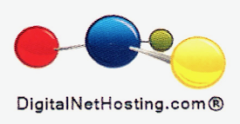Shopify, a leading e-commerce platform, empowers millions of businesses worldwide with its robust and scalable architecture. At the heart of Shopify’s success is its sophisticated technology stack, designed to offer flexibility, efficiency, and a seamless user experience. This page provides a comprehensive overview of the technologies that power Shopify, highlighting how each contributes to the platform’s capabilities.
Core Technologies
Ruby on Rails: The backbone of Shopify’s backend, Ruby on Rails, facilitates rapid development and effective data management. This server-side web application framework is known for its convention over configuration (CoC) approach, streamlining the development process and enabling Shopify to manage millions of stores with ease.
React: Serving as the foundation of Shopify’s frontend, React enhances user interfaces by providing a responsive and dynamic experience. This JavaScript library allows for the development of single-page applications with interactive UIs, ensuring that Shopify merchants and their customers enjoy a smooth and engaging online shopping experience.
GraphQL: Shopify’s API, GraphQL, offers a powerful and efficient method for retrieving data. This query language allows users to specify exactly what data is needed, reducing bandwidth usage and improving the responsiveness of Shopify stores. GraphQL’s flexibility makes it easier for developers to integrate custom features and applications with the Shopify platform.
Redux: Working alongside React, Redux is a state management library that ensures consistent behavior across different environments. It simplifies the handling of application state, making the development of complex features more manageable and improving the overall stability and reliability of Shopify’s frontend applications.
Database and Caching
MySQL: Shopify relies on MySQL for its database needs, utilizing this relational database management system to store and manage vast amounts of data efficiently. MySQL’s reliability and performance underpin the vast product catalogs, customer data, and transaction records across Shopify stores.
Redis & Memcached: For caching and session management, Shopify employs Redis and Memcached. These in-memory data store systems are instrumental in accelerating data retrieval and reducing the load on the primary database, ensuring high performance and scalability for Shopify’s operations.
Infrastructure and Deployment
Docker Containers: Each Shopify shop runs in its own Docker container, providing isolated environments that enhance security and allow for independent scaling. Docker’s containerization technology facilitates consistent deployment across development, testing, and production environments, streamlining the development workflow.
CoreOS: As the production operating system, CoreOS offers a lightweight environment that is optimized for container management. Its focus on automation and security supports Shopify’s need for a stable and scalable infrastructure.
Development and Design Tools
Liquid: Shopify’s proprietary templating language, Liquid, is used for creating customizable themes. It provides a flexible way for designers and developers to tailor the storefront appearance, enabling the creation of unique and engaging shopping experiences.
Shopify CLI & Polaris: The Shopify Command Line Interface (CLI) tool accelerates app development, allowing developers to quickly generate resources, run tests, and deploy applications. Complementing this, Polaris is Shopify’s official design system and UI kit, promoting a cohesive and accessible user interface across Shopify apps and services.
Additional Tools
EJSON & ServicesDB: Shopify uses EJSON for secure template rendering and ServicesDB to monitor the health of applications, automatically opening GitHub issues for any detected problems. These tools enhance the reliability and maintainability of Shopify’s platform.
Ruby and Node Scripts: For backend and server-side logic, Shopify offers support for Ruby and Node scripts, facilitating the development of robust and scalable applications tailored to the needs of Shopify merchants.
Conclusion
Shopify’s technology stack is a testament to the platform’s commitment to innovation, performance, and user satisfaction. By leveraging a combination of cutting-edge technologies and proprietary tools, Shopify provides a comprehensive and versatile e-commerce solution that meets the evolving needs of businesses worldwide. Whether it’s through seamless user experiences, efficient data management, or flexible development options, Shopify continues to set the standard for e-commerce excellence.

